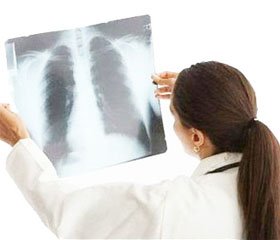Журнал «Боль. Суставы. Позвоночник» 1 (21) 2016
Вернуться к номеру
Markers of bone tissue metabolism and their clinical significance in patients with chronic obstructive pulmonary disease
Авторы: Masik N.P. - Vinnitsa National Pirogov Memorial Medical, Vinnitsa, Ukraine
Рубрики: Ревматология, Травматология и ортопедия
Разделы: Медицинские форумы
Версия для печати
The article was published on p. 77-78
Introduction. Contradictions of the literature data on the relationship of vitamin D level with pulmonary functional parameters determine the aim of this research to study of vitamin D-status and markers of bone metabolism in patients with chronic obstructive pulmonary disease (COPD).
Materials and methods. 47 patients who were hospitalized because of exacerbation of COPD during the autumn-winter (September-December) period of 2012 were examined.
The average age of patients was (53.59 ± 12.83) years with the weight (78.80 ± 12.53) kg and height (170.54 ± 7.84) cm. The body mass index (BMI) was (27.17 ± 4.07). 27 (57.45 %) men and 20 (42.55 %) women were examined. 24 (51.06 %) patients were smokers, pack/years index was 29.08 ± 16.62. All patients were divided into the groups depending on the age and sex.
All patients were were determined such parameters as 1) markers of bone formation — type I procollagen propeptides (P1NP) and osteocalcin propeptydy first type procol-lagen, osteocalcin; 2) markers of bone resorption — β-C-terminal telopeptides of type I collagen (β-СТх); 3) hormonal regulation markers — Intact Parathyroid Hormone (IPH), total vitamin D level (25-ОН vitamin D2 and 25-ОН vitamin D3) with the use of the electrochemiluminescence method on Eleksys 2010 analyzer.
Results. Content of P1NP decreased by 82.96 % in patients with stage IV compared to stage I COPD (p = 0.002). Similarly, level of osteocalcin decreased to 41.00 % in stage IV patients compared to the patients of stage I (p = 0.002). The content of β-СТх increased by 70.66 % in stage IV COPD patients compared to patients with stage I (p = 0.018).
It was revealed that all the patients with COPD suffered from vitamin D deficiency. It should be noted that the severe form of vitamin D deficiency was in 48.94 % of patients. This statistically significant changes of 25 (OH) D level were noted comparing to the stage I and IV (p = 0.006). The IPH index was changed from 37.17 ± 17.91 to 41.68 ± 14.10 (pg/ml) and in I and IV stages COPD patients respectively (p = 0.031). PTH level was higher than normal in 4.26 % of COPD patients, moreover in 97.87 % of cases it was combined with of vitamin D deficiency.
Conclusions. That bone metabolism impairment in COPD patients are characterized by a vitamin D deficiency, suppression of type I procollagen propeptides and osteocalcin production, increased β-C-terminal telopeptides of type I collagen and parathyroid hormone synthesis. The intensity of these changes has a direct correlation to the stage of COPD and the presence of harmful habits.

